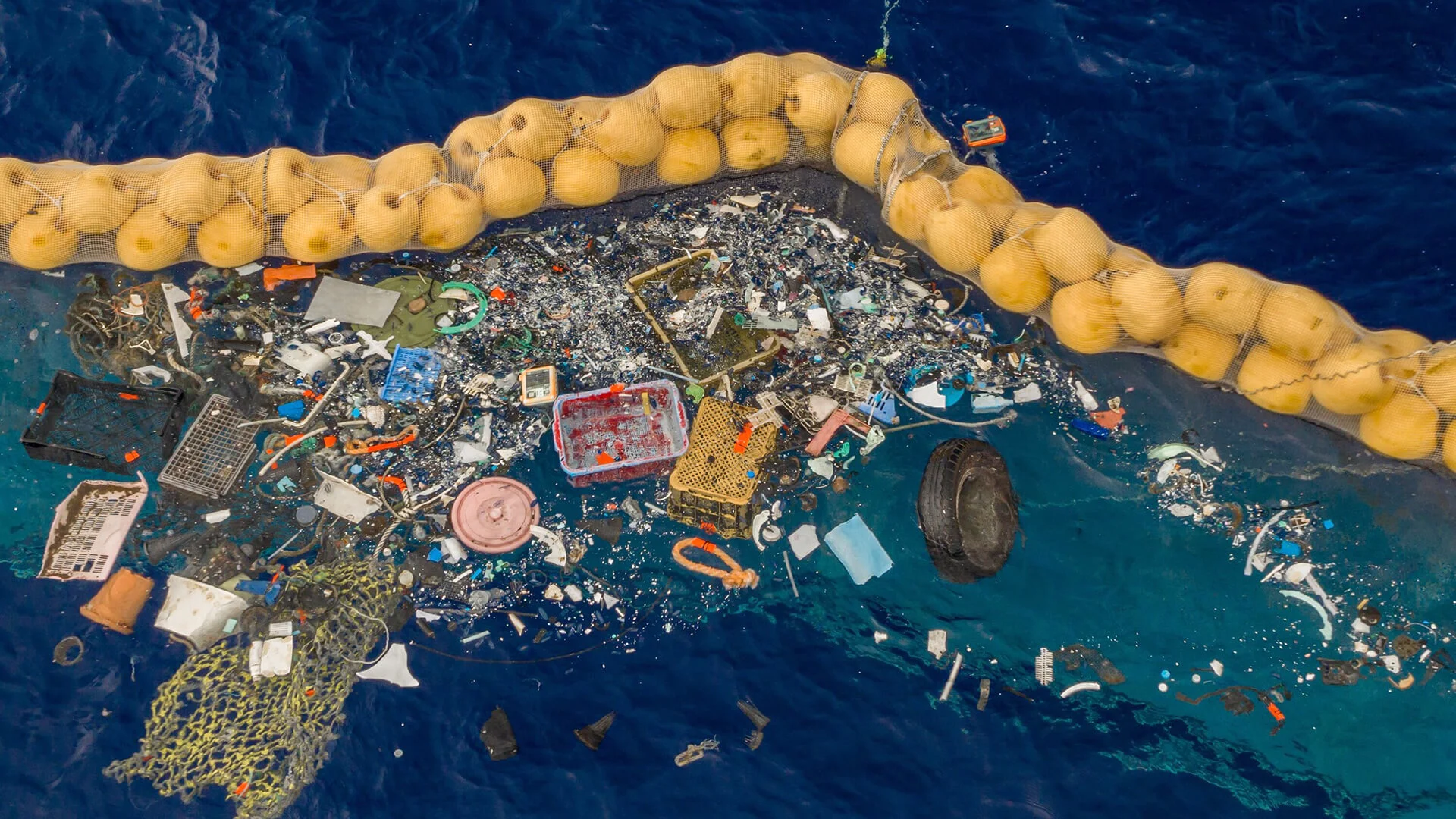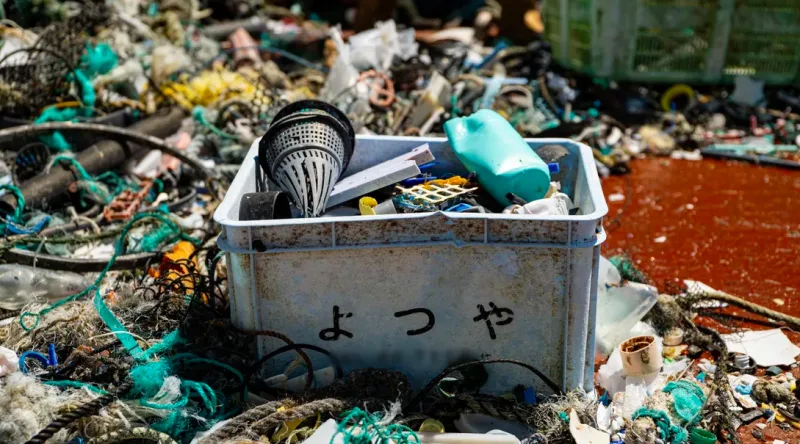
Majority of trash in Great Pacific Garbage Patch linked to just five countries
Plastic trash collected from the garbage patch in the North Pacific Ocean is mostly from fishing activities.
A study published in Scientific Reports states that most of the identifiable trash in the Great Pacific Garbage Patch comes from just five nations.
The Great Pacific Garbage Patch is located between Hawaii and California and is the largest accumulation of ocean plastic on Earth. Ocean currents transport the plastic until they eventually converge, leading the trash into a swirling gyre that continues to grow in size. The size of the garbage patch is estimated to be 1.6 million square kilometres — three times the size of France.
Through a collaboration with The Ocean Cleanup organization, over 6,000 pieces of plastic debris were collected from the garbage patch in the North Pacific Ocean in 2019. The trash was then counted, weighed, categorized, and analyzed for its origin and age.

Plastic extraction from System 002, The Ocean Cleanup’s ocean system cleaning the Great Pacific Garbage Patch. Many crates and buoys originating from fishing activities can be seen in the catch. (The Ocean Cleanup)
The researchers analyzed 6,093 items that were larger than 5 cm, which had a total dry weight of 573 kilograms. Plastic fishing and aquaculture gear was the most common type of identifiable trash, which included fish boxes, oyster spacers, and eel traps. One-third of the trash collected in the study was fragments that were unidentifiable due to decomposition.
See also: Innovative ropeless fishing gear helps prevent whale entanglements
Floats and buoys made up just three per cent of the total number of plastic items found but were 21 per cent of the total mass due to the bulky size of these items. Bottle caps, lids, and other items related to food and drinks represented 13 per cent of the total plastic items. Household items such as containers, drums, jerry cans, and baskets were 14 per cent of the total number of plastic items.

Plastic items were analyzed for clues on their origin. (The Ocean Cleanup)
Of the objects that were inscribed with an identifiable language or another indicator of origin, such as brand name, the top five identified origins were Japan (34 per cent), China (32 per cent), Korea (10 per cent), United States (7 per cent), and Taiwan (6 per cent). Other countries with significant contributions include Canada (4.7 per cent) and France (1.3 per cent).
The researchers attribute Japan’s high contribution to the nation’s significant fisheries industry and the Tohoku tsunami (2011) that carried debris away from the land. The other countries are also active fishing nations.
Some of the trash had identifiable production dates and nearly half of the items were produced before 2000 with the oldest item being a buoy dated to 1966. Eight items originating from Japan ranged from 1975 to 2007.
Watch below: Largest river in Guatemala choked by garbage that causes "trash tsunamis"
Trawling, fixed gear, and drifting longlines were found to be responsible for more than 95 per cent of fishing activities that may have resulted in the floating plastics found.
The Great Pacific Garbage Patch only represents a small amount of plastic trash that is dumped into the environment, which serves as a reminder that this long-lived type of pollution is continuously accumulating at a rapid pace. Current research indicates that several million tonnes of plastic flow into the oceans from coastal cities and rivers each year.
“Our findings further highlight that fisheries play an important role in the solutions to the ocean plastic pollution problem,” the study concluded.
Thumbnail image: The Ocean Cleanup

